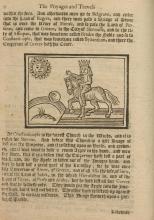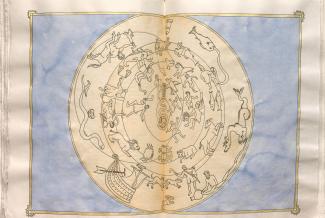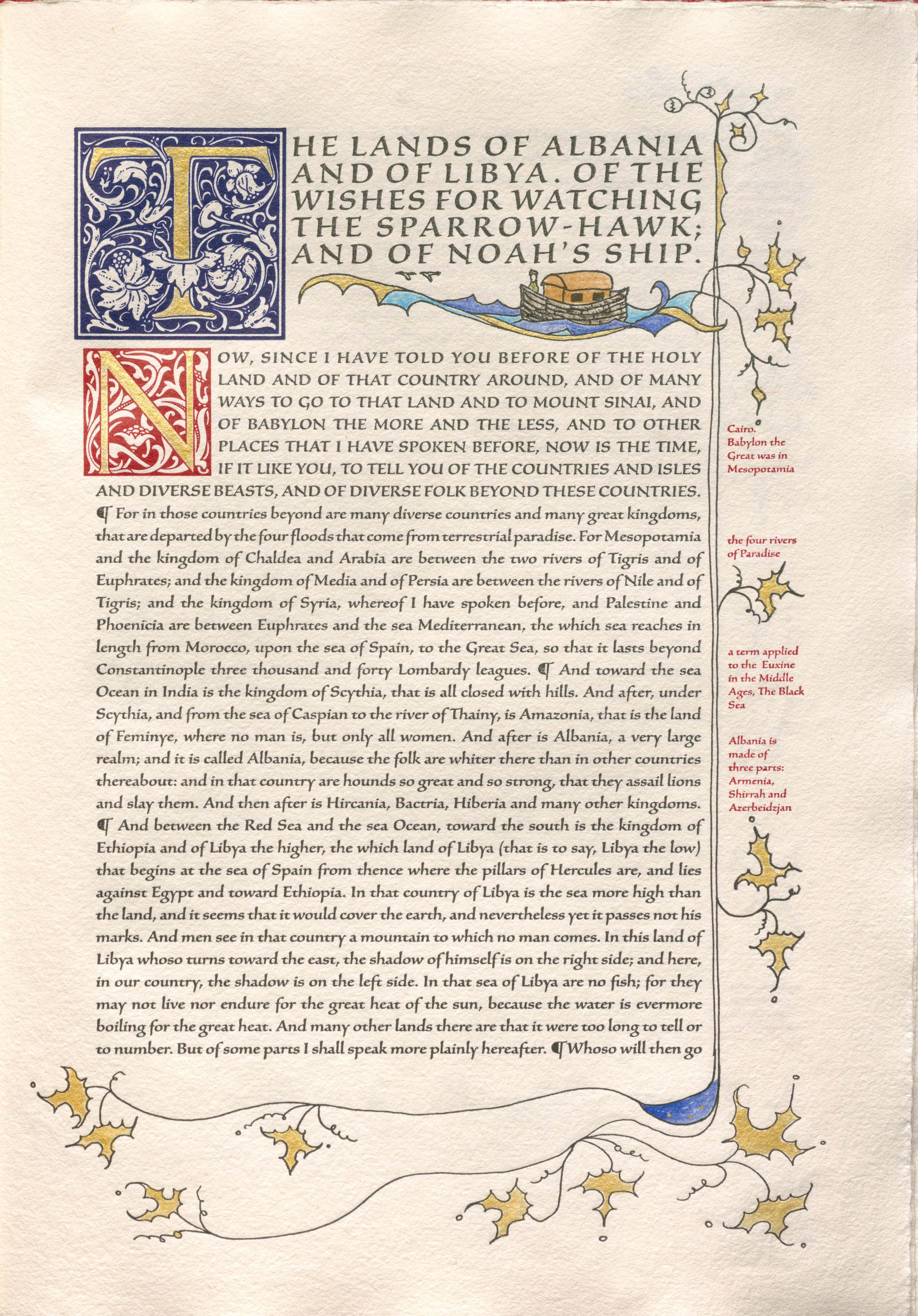One of our favourite weekends of the year is coming up on Friday: the Toronto Antiquarian Book Fair. It’s an opportunity for us to reconnect with the various book sellers – local, national and international – to look at and handle the many impressive materials on display, and to just generally enjoy the bookish atmosphere of it all. The dealers are important players in helping us build our collections here at Fisher: the best ones know what we have and what we covet, and won’t waste their time trying to convince us to purchase something that falls outside of our collection scope.
This year’s fair has me thinking back on last year’s, and how a book I acquired ended up being a serendipitous purchase.
On the first evening, I wandered into the booth of Toronto dealer Karol Krysik, who was eager to show me an item: The Travels of Sir John Mandeville Beyond the Holy Land, a 2019 limited edition fine press book designed and printed by Foolscap Press based in Santa Cruz, CA. While the Fisher is a strong supporter and collector of the Canadian private press, and devotes most of its resources to building that collection, it’s equally important we purchase fine press books from other countries – what I like to refer to as a representative sampling. Even better is when we can make a purchase that complements other materials in our holdings. This Mandeville fell ideally into both these categories: we had only one other Foolscap book at the library – its 1990 version of Stephen Leacock’s The Man in Asbestos – and we had at least a dozen versions of Mandeville’s classic text, including copies dating back several centuries. It seemed like a natural fit.


The history of Mandeville’s travels, and indeed of John Mandeville himself, are shrouded in mystery. While claiming to be an English knight who travelled extensively in the 14th century to far-off places such as India and China, historians generally agree that the name is a pseudonym. And while the author most likely did travel as far Egypt, much of the travelogue is made up, using a variety of sources. Yet it was one of the most popular travel books of the Middle Ages, provided inspiration to future explorers (it is said that Christopher Columbus was heavily influenced by it), and it continues to be a much-studied work.
The Foolscap version can best be described as fun and playful - it's a puckish production.

As the title suggests, the text tracks Mandeville’s travels beyond the Holy Land, beginning with the “lands of Albania and of Libya,” and ending with his account of the land of Prester John, who he claims is the “Emperor of India,” and that his land, “the isle of Pentixoire,” is composed of many kingdoms of Christians. Using a text from based on a manuscript from 1725, it follows Mandeville’s observations of flora and fauna, and the people and kingdoms he encountered along his travels. The book is illustrated by Peggy Gotthold: she’s created margins that are heavily illuminated with animals, plants, fish and various peoples that Mandeville supposedly encountered.

And of course what’s a travel book without maps: this version contains five of them, double-spread, and printed on handmade linen paper and then hand coloured. These are not of course modern maps – there are no precise latitude and longitude coordinates – but they help the reader follow Mandeville’s travels.

So, serendipity. Little did I know when I acquired this book for the library that the Fisher would, several months later, be purchasing what might well be the earliest surviving copy of Mandeville’s Travels: a 14th century manuscript containing a substantial fragment – 15 chapters – of Mandeville’s text. It was an exciting purchase that is already receiving considerable buzz. While the manuscript will of course be of greater interest to Mandeville scholars than the Foolscap version, the 21st century version remains interesting, particularly in comparing the two copies side by side. In fact, I’ve done exactly that this week in two separate seminars I led – a grad class from Trent University, the other a 3rd year undergrad class at UofT – to demonstrate how one might compare copies of the same text, that even something that dates back several centuries still has relevance to book makers and illustrators today.
Let's hope the Fisher librarians have as much luck this weekend with their purchases.
- John Shoesmith, Outreach Librarian
